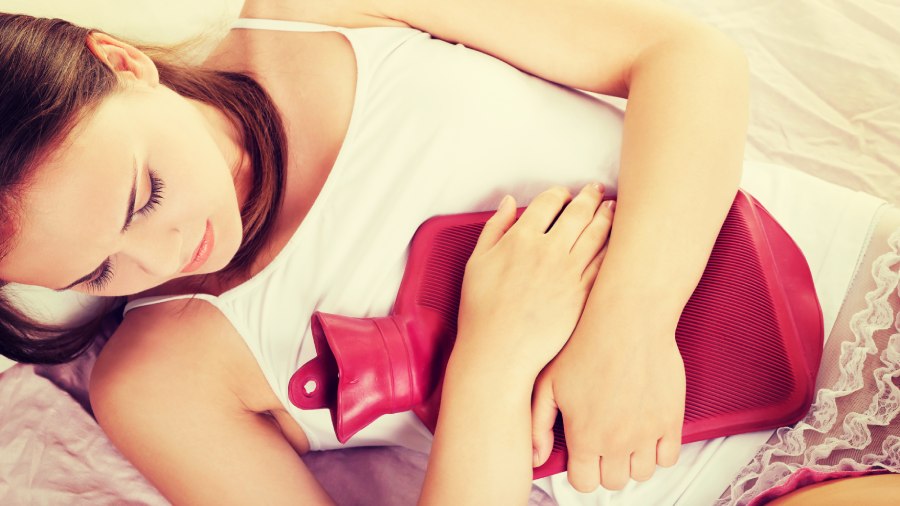From a young age, Sunita had emotional discomfort during her periods. It used to last 3-5 days, sometimes accompanied by severe lower abdominal pain and heavy menstrual flow. But mostly she would become irritable, tear up without any apparent reason, not feel interested in any of her hobbies, pick frequent fights with her family members and have vivid nightmares resulting in disturbed sleep. With age, the symptoms have only intensified. Now when her periods near, Sunita dreads absenteeism from her office and relationship disputes due to her mood swings.
Premenstrual syndrome (PMS) is extremely common in women. It’s estimated that as many as three of every four menstruating women have experienced some form of premenstrual syndrome. PMS is a combination of physical and emotional symptoms (mood swings, tender breasts, food cravings, fatigue, irritability and depression) that many women get after ovulation and before the start of their menstrual period. Though the exact cause is unknown, research shows that PMS happens in the days after ovulation because oestrogen and progesterone levels begin falling dramatically if someone is not pregnant.
However, most women get accustomed to PMS to an extent that it can often be predicted. Routine life is rarely affected. What Sunita and many other women suffer from is a more serious and disabling form of PMS, known as premenstrual dysphoric disorder (PMDD).
In both PMDD and PMS, symptoms usually begin seven to 10 days before periods and continue for the first few days of the period. However, in PMDD the symptoms can be exceedingly distressing and exhausting. They tend to worsen with age and, if untreated, the extreme mood changes can affect work, school, social life and relationships.
Both PMDD and PMS may cause bloating, breast tenderness, fatigue, and changes in sleeping and eating habits. In PMDD, however, at least one emotional symptom (sadness, anger, anxiety or mood swings) stands out. The cause of PMDD isn’t clear. Underlying depression and anxiety are common in both PMS and PMDD so it’s possible that the hormonal changes that trigger a menstrual period worsen mood disorders.
PMDD affects up to 5 per cent of women of childbearing age. Studies have shown a link between PMDD and low levels of serotonin, a chemical in the brain that helps transmit nerve signals. Brain cells that use serotonin also control mood, attention, sleep and pain. Hormonal changes may cause a decrease in serotonin, leading to PMDD symptoms. Deficiency of thyroid hormone, obesity, polycystic ovarian disease (PCOD), intake of oral steroids and diabetes can all lead to an increase in PMDD symptoms.
Often, PMDD is mistaken for PMS and neglected. Further, misinformation and the stigma surrounding menstrual health lead to delays in diagnosis. If unchecked, PMDD increases the risk of psychiatric issues after childbirth such as postpartum blues and postpartum depression. Since it recurs every month with the menstrual cycle, it can trigger depression, fatigue, anxiety and insomnia, which have been seen to increase the risk of suicide. This is further worsened in individuals like Sunita who have severe menstrual cramps.
Please make sure you seek professional help if you suspect menstrual mood changes are affecting your personal and professional life. It may most likely be PMDD.
Medical or gynaecological conditions such as endometriosis, fibroids, menopause, hypothyroidism, PCOD and chronic fatigue syndrome need to be ruled out before concluding that someone is suffering from PMDD. Similarly, depression and anxiety disorders (such as generalised anxiety disorder, panic disorder, OCD) are other possibilities that may masquerade as PMDD. Classically, symptoms will start 7-10 days before periods and cease shortly after the start of menstrual bleeding. If the symptoms mentioned here are happening on a daily basis irrespective of the menstrual cycle, PMDD is unlikely.
Management of PMS and PMDD overlap a lot, though the latter mostly necessitates medication. Lifestyle changes are often effective in controlling the symptoms in mild cases.
Common treatments include antidepressants, hormone therapy, changes in dietary pattern (reduce fat, carbohydrates; increase protein; increase intake of fruits, vegetables, etc.), regular exercise, stress management and relaxation exercises, yoga, meditation, vitamin supplements, anti-inflammatory medicines (especially if associated with pain).
Some over-the-counter pain relievers such as aspirin, ibuprofen and nonsteroidal anti-inflammatory drugs may ease symptoms such as headache, breast tenderness, backache and cramping. Diuretics or water pills can help with fluid retention and bloating.
For some women, 1,200 milligrams a day of dietary and supplemental calcium may help with symptoms. Vitamin B6, magnesium and L-tryptophan may also work, but ask your doctor for advice before taking any supplements. Some studies suggest that chasteberry (Vitex agnus-castus) is good for PMDD; though there is not enough research. Early detection of PMDD can improve quality of life and mental wellbeing.
The writer is a consultant geriatric psychiatrist based in Calcutta and a member of the International Psychogeriatric Association











